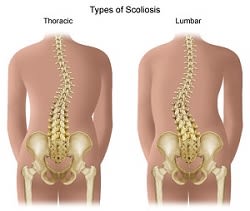By Moira McCarthy, MD, Orthopedic Surgeon, Sports Medicine, HSS Stamford Outpatient Center, HSS Orthopedics at Stamford Health Collaborative
Whether your winter exercise regimen includes indoor sports like basketball or volleyball or outdoor pursuits such as skiing or snowboarding, it's important to guard against injury risks while staying active in winter.
Whether your winter exercise regimen includes indoor sports like basketball or volleyball or outdoor pursuits such as skiing or snowboarding, it's important to guard against injury risks while staying active in winter.
The quality of care that has earned #1 nationwide ranking for the past nine years is now available locally by HSS Orthopedics provided by Stamford Health.
Dr. Moira M. McCarthy, sports medicine surgeon at HSS Orthopedics at Stamford Health, offers her winter exercise and fitness tips for enjoying winter sports safely:
1. Train and condition your body before the season
No matter the sport, it's important to balance endurance training with quality of movements. It is key to emphasize proper alignment, strength training, and activation of the appropriate muscles. As many winter sports require movement of your lower extremities, I recommend strengthening the hips, quads, hamstrings and core. If you're working with a trainer or therapist, reinforce your sessions by exercising in front of a mirror and ensuring you have proper alignment.2. Warm up
Before you hit the slopes or take the court, create mobility in your lower extremities from “low to high” by stretching the calves, working up to the hamstrings, then quads and hips. Mini-squats are helpful to get your glutes activated and ready for skiing. Warm up the appropriate muscles and make sure to pay equal attention to both sides of the body for equal alignment.3. Eat a healthy diet and stay hydrated
A well-balanced diet that includes macronutrients (proteins, fats and carbohydrates) and micronutrients (vitamins and minerals) is essential for performance, growth and health. Eat meals high in carbs and protein three hours prior to playing a sport to allow for effective digestion and help build and repair muscle. Enjoy a recovery meal 30 minutes after exercising, and another one to two hours later to help support growth and increase lean muscle mass. While not as obvious in the winter, hydration is still important as you need to replenish fluids even during cold-weather outdoor activities. Rehydrate before, during and after exercising, with water for shorter exercise and a combination of water and sports drinks for longer activities.4. Don't forget in-season training
Some sports enthusiasts claim they don't have time for in-season training and prefer playing their sport without in-season training. Don't let this be you. Forgetting to train can lead to injury. It is best to develop a regimen in-season for pre-game activities and off-day recovery activities. Continuing to do workouts that are designed to prevent injury in-season and off-season is essential to successful athletes.5. Choose the right equipment
If you ski, make sure your skis, boots and bindings are in good shape and adjusted accordingly. Bindings that don't release easily can create rotational torque in a fall, which leads to an increased risk for ACL tears, fractures, and other leg injuries. Good shoes with ankle support are key for jumping and lateral movement with basketball and volleyball, while an ankle brace or taping make sense if you have an ankle injury history.6. Remember to recover
If you're sore after playing a sport, apply ice (a natural anti-inflammatory) to the affected area. You should replenish any lost fluids. Never underestimate the power of improved quality and duration of sleep, which can enhance athletic performance at all levels.Featured Expert/ Author























